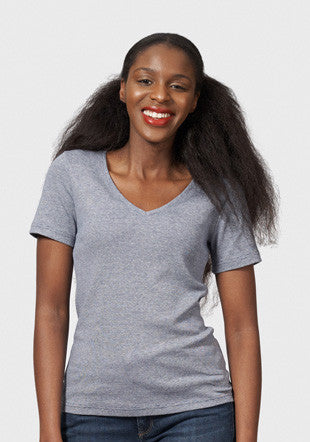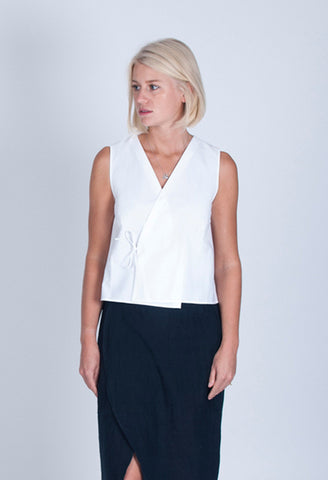Pulse of Fashion Industry report outlines the environmental impacts of fast fashion.
Fashion is the second most polluting industry in the world. Since you’re reading this article, I’m sure that statement is familiar. But while it might shock, it doesn’t do anything to explain why. And if we don’t understand why the industry is so polluting, it makes it very difficult to understand how we could begin to change things.
How much do you know about how a piece of clothing is made? Here’s a simple breakdown:

Lifecycle of a garment
This week, The Global Fashion Agenda and Boston Consulting Group released a report clearly and simply setting out the ways in which our addiction to fast fashion is affecting the environment and global society.
It’s pretty hard hitting - if you have a spare morning, enjoy bar charts, graphs and a healthy dose of statistics, I’d recommend a read. But I’m guessing you’re a little short on time and would really appreciate a summary – and a helpful one.
So I’m going to give it a shot.
For future posts straight to your inbox, sign up to STUDY 34
Planetary Boundaries: what are they and why should I care?
A Planetary Boundary is a boundary ‘within which humanity can continue to develop and thrive for generations to come.’
There are four key boundaries to consider in the case of fashion: Water Consumption, Energy Emissions, Chemical Usage and Waste Creation.
And our actions until this point in all aspects of life have meant that we have exceeded all but one of these boundaries. Our incessant buying of fashion is an overwhelming contribution to this.
But don’t panic.
While the current situation should shock anyone, there are particular elements that we as consumers could have a disproportionately positive effect on, should we choose to do so.
And really, we have to. Because if we don’t choose to now, we will be forced to later.
Your ultimate guide to buying better clothes

Whereabouts in the clothing supply chain do we use so much water?
Mainly in the raw materials phase, in particular in the growing of cotton. However, water is also used in the processing stages (dying, cleaning etc) and again, in considerable volumes, when we wash our clothes.
How can your choices help change things?
- Think about the materials your clothes are made of. Organic cotton, for example, can use up to 91% less water then conventional cotton.
- Think twice before washing your clothes – try airing them for a while first.
What/where to buy when needed:
Look for organic cotton wardrobe basics from The White T-Shirt Company or People Tree.
Women's micro stripe t-shirt in GOTS certified organic cotton £35,
The White T-shirt Company

Whereabouts in the clothing supply chain do we use a lot of energy and why?
In the raw material phase (use of oil in the production of polyester for example), and the processing stage (all the mechanical equipment being operated). But again, it is highly significant in the usage stage in the way we choose to care for our garments by washing, drying and ironing.
What simple things can you do today that would be better?
- Again, don’t wash your clothes so often, and when you do, wash at a lower temperature (they’ll still be clean!).
- Choose to air-dry your clothes when you can (this will also affect how long they may last, as mechanical drying affects quality).
What/where to buy when needed:
Go for a brand that uses recycled materials (thereby reducing energy consumption as they don’t require virgin fibre). Brands like Ecoalf and Patagonia are leaders in this field and produce functional, good-looking clothing. Brands like Reformation and the smaller Starch Slides use fabrics that are destined to go to waste to make something new and, consequently, very limited in quantity.
'The Tina' flat mule £107, Starch Slides

Whereabouts in the clothing supply chain do we use a lot of chemicals and why?
Mainly in the growing of raw materials and, in particular, cotton. Fertilisers and pesticides are used in the growing of conventional cotton and run off into the waterways, harming communities and environments. The processing phase (dying in particular) can also be listed here, as lack of water treatment (releasing water into the environment when still full of chemicals) has the same effect. And once again, our usage; chemicals in detergents and micro-plastics are released through washing.
What changes can I make today?
- By choosing to buy clothing made from recycled fibres or organic cotton (that prohibits the use of any chemicals), you are sending a signal to brands that you want more environmentally friendly fibres in your clothes.
- Also, by buying clothing that uses fibre in its natural colour. Alpaca wool, for example, produces a wide variety of natural colours – 22 shades in total, more than any other natural fibre.
What/where to buy when needed:
Go for a brand that you know is dedicated to the triple bottom line of People, Planet and Profit. Companies like Veja and Finisterre hone in on all parts of their supply chains. Smaller brands like Eight Hour Studio use exclusively organic cotton and Seeker x Retriever use only natural dyes.
Striped t-shirt dress £133, Seeker x Retriever

Whereabouts in the clothing supply chain do we produce a lot of waste and why?
This part is overwhelmingly to do with us, the consumers, more than any other factor. By buying too many cheap clothes and throwing them away, we, more than anyone else in the supply chain, are contributing massively to this problem. Only 20% of clothing produced today is reused or recycled in some way. There are others involved too of course. Brands that churn out cheap, disposable clothing that cannot be recycled at the end of its life, are also guilty of waste.
What can I do today?
- Don’t buy into fashion trends so readily and only buy things that you really need.
- If you do need to buy something, only buy it if it suits you and you are comfortable wearing it (really think about how may times you will realistically wear it too).
- Make sure it is versatile (goes with lots of things you already have) and is good quality so it will stand the test of time.
- Look after the clothes you have so that they last longer; don’t over wash them and try to repair instead of replace them.
- Buy from second hand shops.
- Donate clothes (that are in good condition) that you no longer want, or give them to someone you know would like them.
What/where to buy if needed:
Think about your personal style and invest in simple pieces that are not trend lead, but rather the building blocks of your wardrobe. For me, these are pieces from Kowtow, The White T-shirt Company, Veja and Levi’s for example. Invest in items made for you and that can be tailored to your preferences (Veryan), or something made from recycled or biodegradable fibres (Freitag).
Activism never looked so good
The report unearthed an additional insight worth mentioning, that only goes further to support the need for action on our side.
It revealed that ‘a third of Millennials strongly agree that they are more likely to buy from companies that are mindful of their social responsibilities’, but that ‘only a tiny proportion of fashion shoppers are willing to pay a premium for sustainable products.’ In additional to that, ‘one in four firms named consumers’ unwillingness to pay such a premium for preventing them from revising their practices.’ And finally, when a group of managers from a range of fashion firms were asked the question ‘to whom would you attribute the major responsibility for driving the industry towards more sustainability?’
Their answer was… us, the consumers.
The industry suggests that we, the consumers, have the biggest part to play in making the fashion industry a more responsible one, yet our understanding of how we can do that is still arguably low.
I hope this article has gone some way to inspire your action.
As consumers, the price of a product disproportionately determines whether we buy it. But I have learnt first hand over the past few years, that by buying clothing in a more mindful manner, I have spent a markedly lower amount per year than I have before. And yet, I have never been happier or more comfortable in my clothing by buying fewer items, of higher value, and supporting brands who are doing something interesting and worthwhile.
In a recent article in Womankind magazine, Lucy Treloar quoted American novelist Alice Walker as having written ‘activism is the rent I pay for living on this planet.’
And today, activism in fashion has never looked so good.
Like this post? Tweet it!

All of the brands represented on the STUDY 34 platform are driven by individual desires to work towards change – whether that be the sourcing of responsible raw materials, investing in real craftsmanship during the manufacturing process, or seeking to create timeless pieces outside of fast fashion trends.






Leave a comment